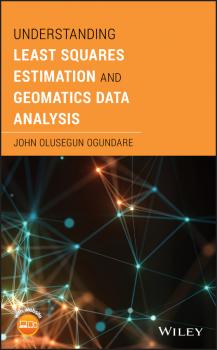ТОП просматриваемых книг сайта:















John Ogundare Olusegun
Список книг автора John Ogundare OlusegunАннотация
A comprehensive overview of high precision surveying, including recent developments in geomatics and their applications This book covers advanced precision surveying techniques, their proper use in engineering and geoscience projects, and their importance in the detailed analysis and evaluation of surveying projects. The early chapters review the fundamentals of precision surveying: the types of surveys; survey observations; standards and specifications; and accuracy assessments for angle, distance and position difference measurement systems. The book also covers network design and 3-D coordinating systems before discussing specialized topics such as structural and ground deformation monitoring techniques and analysis, mining surveys, tunneling surveys, and alignment surveys. Precision Surveying: The Principles and Geomatics Practice: Covers structural and ground deformation monitoring analysis, advanced techniques in mining and tunneling surveys, and high precision alignment of engineering structures Discusses the standards and specifications available for geomatics projects, including their representations, interpretations, relationships with quality assurance/quality control measures, and their use in geomatics projects Describes network design and simulation, including error analysis and budgeting Explains the main properties of high-precision surveys with regard to basic survey procedures and different traditional measurement techniques Analyzes survey observables such as angle, distance, elevation difference and coordinate difference measurements, and the relevant equipment, including the testing and utilization of the equipment Provides several case studies and real world examples Precision Surveying: The Principles and Geomatics Practice is written for upper undergraduate students and graduate students in the fields of surveying and geomatics. This textbook is also a resource for geomatics researchers, geomatics software developers, and practicing surveyors and engineers interested in precision surveys.
Аннотация
Provides a modern approach to least squares estimation and data analysis for undergraduate land surveying and geomatics programs Rich in theory and concepts, this comprehensive book on least square estimation and data analysis provides examples that are designed to help students extend their knowledge to solving more practical problems. The sample problems are accompanied by suggested solutions, and are challenging, yet easy enough to manually work through using simple computing devices, and chapter objectives provide an overview of the material contained in each section. Understanding Least Squares Estimation and Geomatics Data Analysis begins with an explanation of survey observables, observations, and their stochastic properties. It reviews matrix structure and construction and explains the needs for adjustment. Next, it discusses analysis and error propagation of survey observations, including the application of heuristic rule for covariance propagation. Then, the important elements of statistical distributions commonly used in geomatics are discussed. Main topics of the book include: concepts of datum definitions; the formulation and linearization of parametric, conditional and general model equations involving typical geomatics observables; geomatics problems; least squares adjustments of parametric, conditional and general models; confidence region estimation; problems of network design and pre-analysis; three-dimensional geodetic network adjustment; nuisance parameter elimination and the sequential least squares adjustment; post-adjustment data analysis and reliability; the problems of datum; mathematical filtering and prediction; an introduction to least squares collocation and the kriging methods; and more. Contains ample concepts/theory and content, as well as practical and workable examples Based on the author's manual, which he developed as a complete and comprehensive book for his Adjustment of Surveying Measurements and Special Topics in Adjustments courses Provides geomatics undergraduates and geomatics professionals with required foundational knowledge An excellent companion to Precision Surveying: The Principles and Geomatics Practice Understanding Least Squares Estimation and Geomatics Data Analysis is recommended for undergraduates studying geomatics, and will benefit many readers from a variety of geomatics backgrounds, including practicing surveyors/engineers who are interested in least squares estimation and data analysis, geomatics researchers, and software developers for geomatics.


